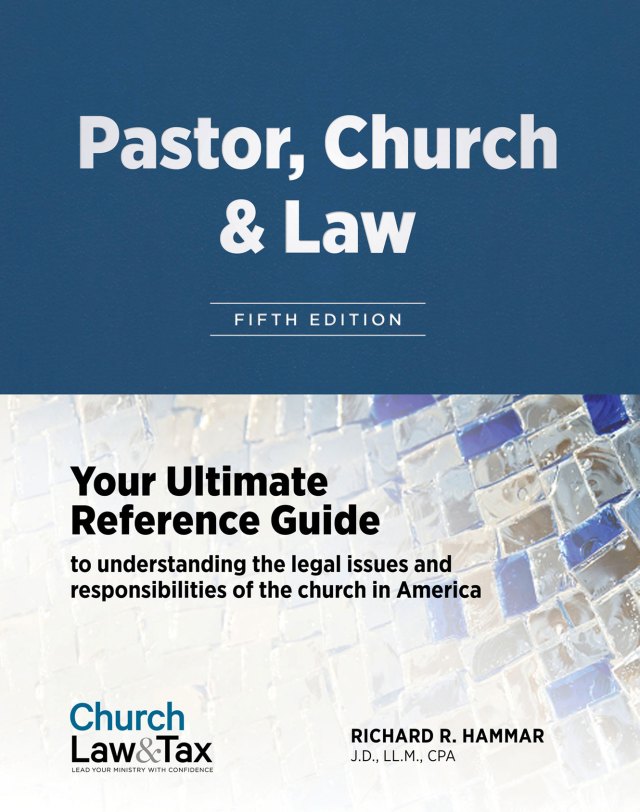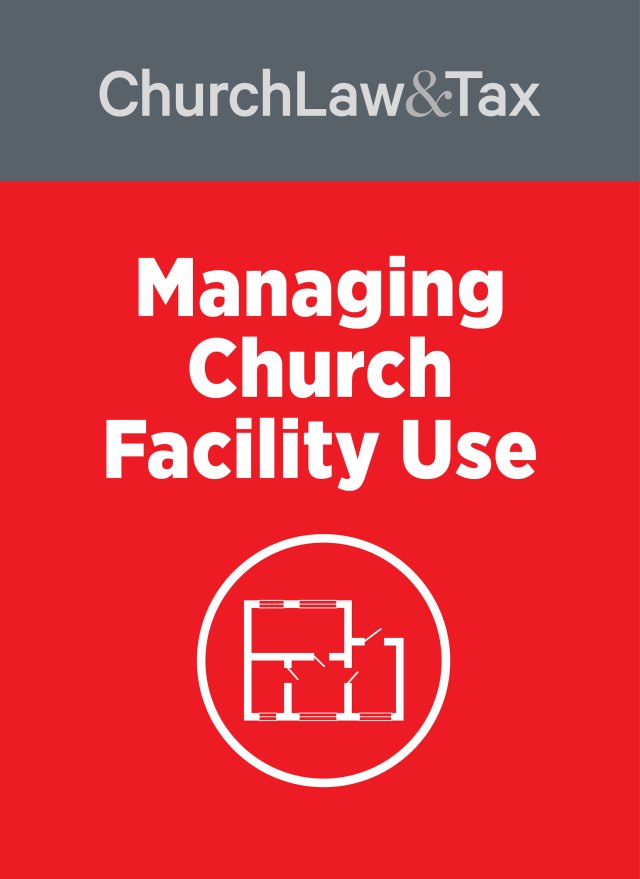Key point 7-17. Churches do not have to tolerate persons who disrupt religious services. Church leaders can ask a court to issue an order barring the disruptive person from the church’s premises. If the person violates the order, he or she may be removed from church premises by the police and may be found to be in contempt of court.
A state appellate court in Pennsylvania ruled that a trial court acted properly in banning a disruptive protester from church property, but it went too far in prohibiting the protester from coming within 5,000 feet of the church’s property.
Background
A man (the “protester”) moved to Philadelphia in 2008 and joined the Tenth Presbyterian Church, where he remained a member until the church excommunicated him in August 2016. The protester thereafter began picketing at the church regarding his excommunication and the conduct of certain current and prior church officials. The protester brought a defamation action against individual members of the church, but ultimately, a jury tendered a verdict against him.
After the verdict in the defamation action, the protester picketed outside of the church every Sunday, both before and after church services.
The church filed a complaint
On July 24, 2019, the church filed a complaint for an injunction and an emergency motion for a preliminary injunction seeking to restrict the protester from coming within 1,000 feet of all properties owned by the church. Following oral argument, the protester temporarily agreed to the church’s requested relief.
The trial court subsequently conducted a hearing on the church’s motion for a preliminary injunction in early 2020. The trial court described the evidence presented at that hearing as follows:
[The protester] testified [that] he began picketing outside [of the Church] after the March 22, 2019, jury verdict more frequently, with a sign that contained the phrase . . . “lying,” and rape[,]” because he was displeased with the results of the case. [The protester] further testified that he had protested while wearing a body camera and film[ed] congregants outside [of the Church property]. [The protester] testified that [a trial court Order and subsequent Opinion in the defamation case] misrepresented the truth. [The Church’s former administrator] testified that [the protester] frequently wore a visibl[y] “concealed” firearm to [C]hurch when he was a member[,] and that he continued the practice while picketing with the sign and body camera. [The former administrator] testified that [the protester] would verbally harass and yell at congregants outside [the Church] and then post body camera videos on a blog. [The senior pastor of the Church] testified that [the protester] called him the “son of Satan” and a liar. [The pastor] testified that [the protester] had verbally disparaged [the protester’s] own family for not committing to his protest and not being faithful, including referring to [the protester’s] wife as Job’s wife. . . . [The pastor] also testified that [the protester] seemed preoccupied with safety and firearms, such that he would stand beside [the pastor] and point out individuals who[m] he thought were carrying firearms. [The protester’s] fixation on security and policing[,] even minor behavior of [the C]hurch congregants[,] went on for years and included concerns about stolen phones, money, and immigrants. [The protester] himself provided testimony that he has been the only individual telling the truth, that he has mailed 100 pages of material to 200 members of the Church, that he will never stop any of his behaviors until [the Church’s] leadership has resigned in full, and that [the Church] was trying to poison him and hire a hitman to assassinate him. . . . [A congregant] testified that outside of [C]hurch services on June 16, 2019, [the protester] told her he was an instrument of God, similar to a prophet, and that only [he] knows the true nature of [the pastor’s] soul. [The protester] went on to tell [the congregant] that [the pastor] was a son of Satan, and that any congregants who support [him] are doing Satan’s work. [The protester] also told [the congregant] that he was unhappy with his wife, described her as Job’s wife because she did not support him, and that his oath to remove [the pastor] from the [C]hurch was more important to him than his family.
. . . [The trial court] granted [the Church’s] motion and enjoined [the protester] from appearing within five thousand (5,000) feet of [the Church’s] properties.
The protester claimed his activities were constitutionally protected
Thereafter, the protester appealed, claiming that the trial court improperly barred him from constitutionally protected peaceful protest. He insisted that his activities were protected under the First Amendment to the United States Constitution.
According to the protester, his claims implicate his constitutional right to freedom of speech. The First Amendment provides as follows:
Congress shall make no law respecting an establishment of religion, or prohibiting the free exercise thereof; or abridging the freedom of speech, or of the press; or the right of the people peaceably to assemble, and to petition the Government for a redress of grievances.
The United States Supreme Court has mandated that court orders affecting First Amendment rights “must be tailored as precisely as possible to the exact needs of the case.” . . . Therefore, “[a]n order issued in the area of First Amendment rights must be couched in the narrowest terms that will accomplish the pin-pointed objective permitted by constitutional mandate and the essential needs of the public order” (emphasis added).
In addition, the Pennsylvania Constitution provides:
The free communication of thoughts and opinions is one of the invaluable rights of man, and every citizen may freely speak, write and print on any subject, being responsible for the abuse of that liberty.
Thus, under Pennsylvania law, “peaceful picketing conducted in a lawful manner and for a lawful purpose is lawful.”
While the appellate court agreed with the trial court that an injunction barring the protester from church property was valid, it concluded that the trial court’s decision banning him from being within 5,000 feet of the church was excessive:
[W]e agree that the trial court had “apparently reasonable grounds” for the imposition of a preliminary injunction against [the protester]. . . . However, we cannot conclude that the five-thousand-foot injunction imposed upon [the protester] was crafted so as to “be no broader than is necessary for the petitioner’s interim protection.” . . . Rather, the trial court couched its preliminary injunction in the broadest terms to protect the interest of the Church and its members, disregarding [the protester’s] constitutional right to protest the Church and its leadership. A five-thousand-foot restriction places [the protester] well beyond the point at which his constitutional right to protest is utterly extinguished. Put succinctly, the five-thousand-foot restriction is not “couched in the narrowest terms that will accomplish the pin-pointed objective permitted by constitutional mandate and the essential needs of public order.”
What this means for churches
While the First Amendment guarantee of free speech is robust, a church need not tolerate disruptive individuals. The courts will issue injunctions to ban a disruptive individual from attending church so long as this is done in the least restrictive means to ensure that the constitutional protection of speech is not compromised or infringed.
The court in this case concluded that banning a disruptive individual within 5,000 feet of the church’s property “places [the protester] well beyond the point at which his constitutional right to protest is utterly extinguished. Put succinctly, the five-thousand-foot restriction is not ‘couched in the narrowest terms that will accomplish’’’ the public interest.
Tenth Presbyterian Church v. Snyder, 266 A.3d 640 (Pa. App. 2021)




